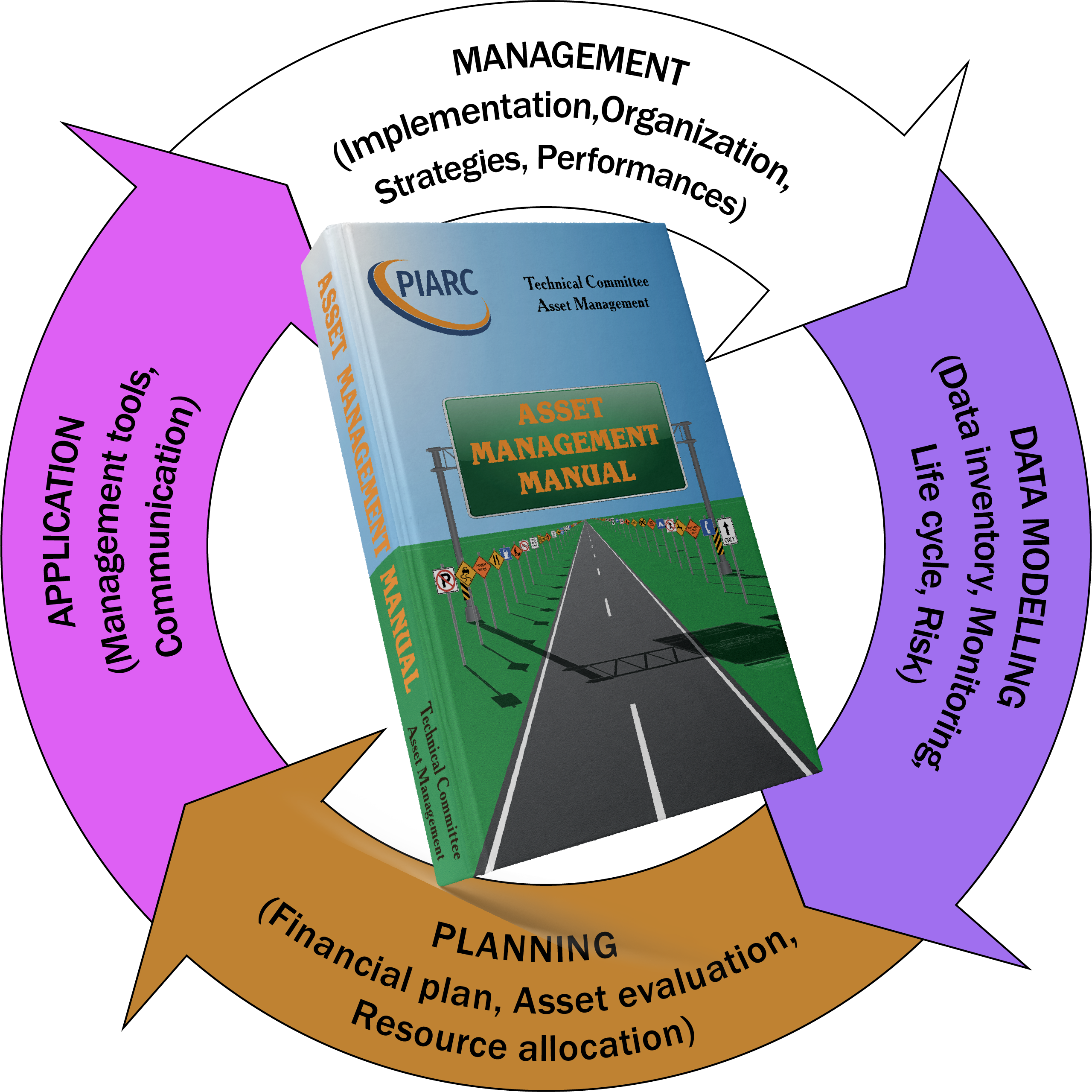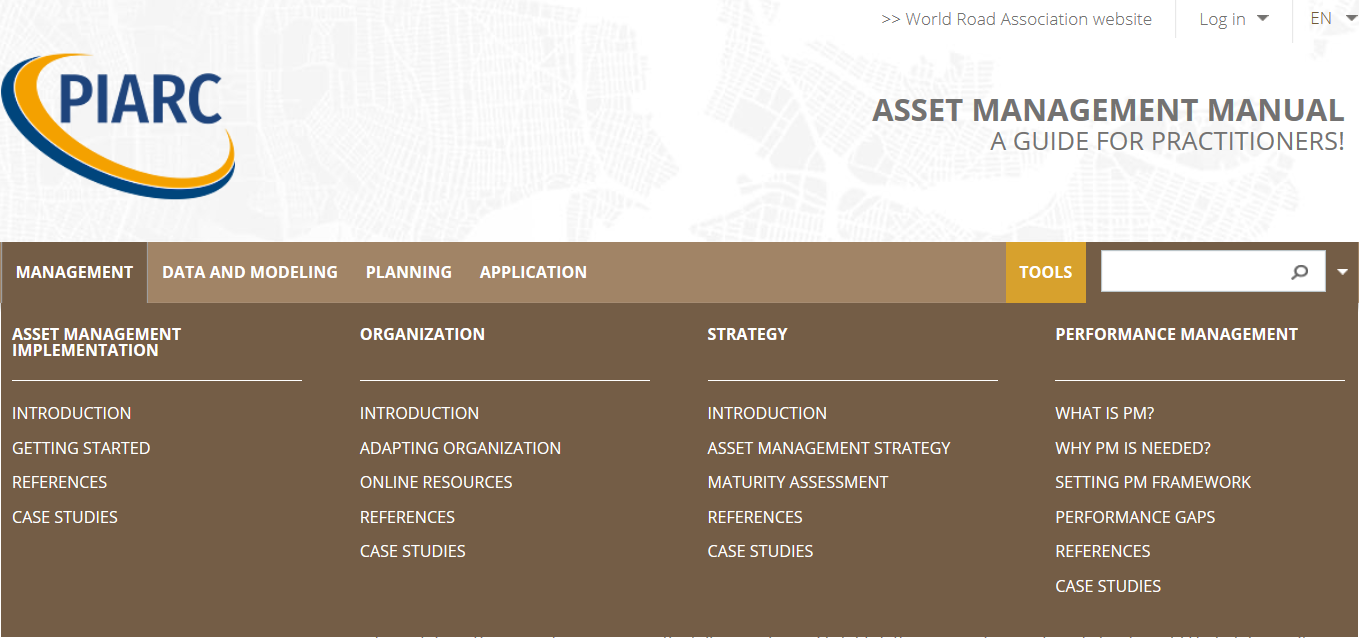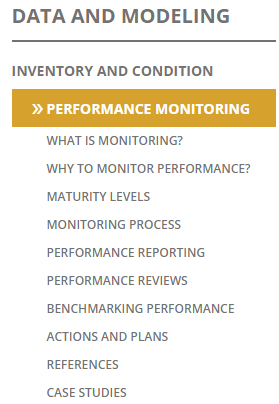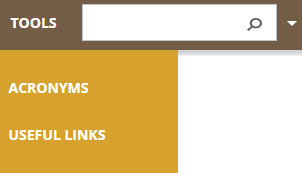
Asset Management Manual
A guide for practitioners!

Asset Management Manual
A guide for practitioners!
Road infrastructure asset is the most valuable asset owned by the public sector in most countries and it supports a nation’s economy. Traditional management methods will no longer be sufficient to meet 21st century business and political demands.
Asset management is a well-established discipline successfully implemented in several countries, for management of highways as well as other physical asset, addressing demands of a nation’s citizens and industry for greater accountability and transparency, more efficient use of funds, greater focus on customer expectations and more sustainable solutions.
It is recognized that all road organizations manage their assets, but they do not necessarily all apply an asset management framework in order to achieve their desired outcomes from the delivery of their service to the traveling public and other stakeholders.
This manual has been developed by the World Road Association (PIARC) and it provides advice: on how asset management principles may be used to support a more efficient approach to maintain road infrastructure assets - road organizations’ most valuable assets, and on the implementation and continuous development of road infrastructure asset management.
The manual builds on the progress made with asset management, as matter of fact manuals from several countries, documents, websites and materials are referenced. The manual also contains case studies of successful practices to document the lesson learned and experience gained in implementing asset management.
There are many reasons why the appropriate level of asset management practice varies among road organizations, or within a road organization, as road AM, practices consolidate. Therefore, this manual is aimed at national and local road organizations, regardless to organization asset management competency (maturity level), and at all of those involved in managing highway infrastructure, including senior decision makers, asset managers and practitioners. The manual is not intended to replace approaches that have been successfully adopted already, but to provide the basis for a consistent approach to and understanding of the implementation and delivery of the benefits associated with asset management.
The asset management framework presented in this asset management manual addresses short- and long-term condition and performance managing for the whole assets life, including timely preservation actions and considerations of risk and risk management. It also supports making the case for funding and better communication with stakeholders, which facilitates a greater understanding of the road infrastructure assets contribution make to economic growth and the needs of national and local road networks. Moreover, all topics are illustrated considering the evolution of maintenance decision making capabilities through progressively increasing maturity levels.

This website is divided into four sections. Each section is made up of group of themes which are the activities that support asset management. Each theme is made up of topics that describe the technical, institutional and practical issues covered.
This brown horizontal toolbar appears at the top of each page and shows the sections.

To move from page to page you can use the drop-down menus on the brown toolbar (below the banner).

As a basis for providing a consistent approach to implementing this guidance and its recommendations, a framework for road infrastructure asset management has been introduced. This framework sets out the activities that support asset management and that are to be addressed by road organizations as they implement asset management in their organizations. The 15 chapters of the manual describe the activities and are grouped under four main sections (see picture below).
Each of the 14 chapters has a top-level page that outlines the scope of the information provided with options to drill down to detailed topics that are shown in a side menu of the page.
Click on any of the menu items on the left of the page – this will reveal the topics that are associated with the chapter. For example:

The website is illustrated with case studies, reference sources and external links. These are shown in the menu.
The drop down menu of “Tools” in the top menu provides access to two information pages. You can use the “Search” box alongside "Tools" to enter your search term – either a key word or a phrase in double quote marks.

In the footer of every page there are links to website support, the site map, technical requirements.

© World Road Association (PIARC).
The contents of this website are copyright – all rights reserved.
Files, images and documents can be freely reproduced provided it is only for personal use, training or education purposes – subject to the following terms and conditions:
PRINTING, PHOTOCOPYING
Printing, photocopying and other means of reproduction for commercial purposes in any form or by any means, electronic or mechanical, is not permitted without permission in writing from the World Road Association (mailing and email addresses below). The permission of the World Road Association is also required to re-use the information for the purposes of publishing, broadcasting or translating into other languages.
DISCLAIMER
While every effort has been made to ensure the accuracy of the contents of this website, the World Road Association cannot be held responsible for any errors or omissions.
Use of a term in this web site should not be regarded as affecting the validity of any trademark or service mark.
The identification of a specific public agency, research entity, or company in no way reflects an endorsement of their research, practices, products, or services.
Please notify the Association of any errors that require correction (mailing and email addresses below).
LANGUAGE VERSIONS
This version of the website is in English. In future it will also be published in French and Spanish. When available, links to each language will be included in the header on each page.
World Road Association (PIARC/AIPCR)
La Grande Arche
Paroi Sud - 5th Floor
F-92055 La Défense cedex
FRANCE
email: info@piarc.org
Main website: https://www.piarc.org/en/